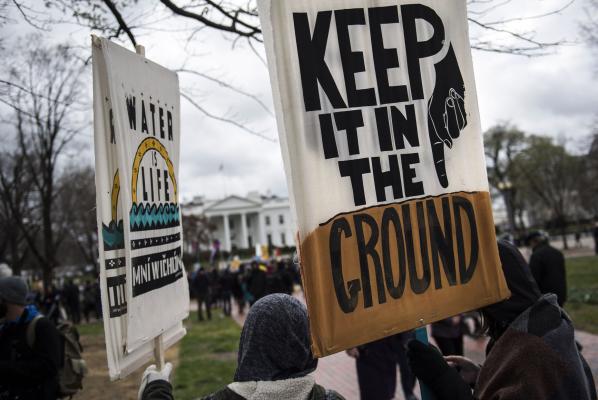
March 28 (UPI) — Crude oil has been inserted into the Dakota Access pipeline in North Dakota in preparation for putting the full line in service, according to the company operating it.
Energy Transfer Partners, an entity behind the 1,172-mile pipeline, announced late Monday that oil was inserted into a section of the pipeline running beneath Lake Oahe in North Dakota.
“Dakota Access is currently commissioning the full pipeline and is preparing to place the pipeline into service,” a court filing was quoted by The Hill as reading.
The progress comes one month after U.S. President Donald Trump signed executive orders that made it possible to complete the Dakota Access and restart the process for the construction of the Keystone XL oil pipeline from Canada.
Dakota Access has long been a source of contention given its proximity to tribal lands in and around North Dakota. State regulators in North Dakota say there’s not enough pipeline capacity to transport the amount of crude oil coming out of the Bakken and Three Forks oil reservoirs, leaving companies with rail as a primary transit alternative.
The Standing Rock Sioux Tribe and its supporters said Dakota Access would threaten sacred tribal lands and the water supply for residents in the region. Concerns about water supplies in the region also prompted reconsideration for the route for the Keystone XL oil pipeline, before President Obama moved against the project on broader environmental grounds. Trump’s administration reversed that decision last week.
Dakota Access was the target of widespread opposition since at least last year. In early March, however, a federal judge ruled against the Cheyenne River Sioux and Standing Rock Sioux, who were challenging the permit process for the pipeline.
Inserting oil into Dakota Access came on the same day that Norway’s DNB Bank announced it was divesting from the project. The bank said in a statement it was using its position as a lender to call for an independent investigation into the safeguarding of indigenous rights.
“By selling our stake, we wish to signal how important it is that the affected indigenous population is involved and that their opinions are heard in these types of projects,” Harald Serck-Hannssen, the head of international developments at the bank, said. “Although there have been attempts at consultation by the project parties, the outcome of the process suggests that these have been inadequate.”





